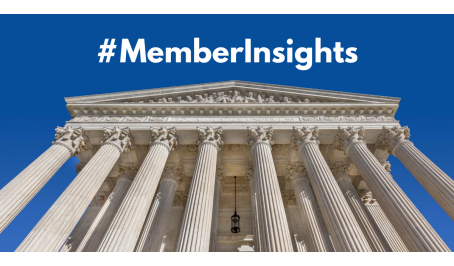- Membership
- The NY Chapter
- Our Career Services
- Committees
- National FACC Network
Supreme Court Case: Wayfair Sales Tax Exposure for Corporations
Member news | August 04, 2020
The FACC-NY network is composed of a diverse mosaic of talented, experienced, and open-hearted professionals united by a desire to share their knowledge, nurture meaningful connections and succeed professionally. In this #MemberInsights series, we invite a guest member to contribute timely and relevant tips and insight for adapting your activities to overcome immediate challenges and plan for the long-term.
In this article, gain legal insight on the South Dakota v. Wayfair case from FACC-NY Member Bruce Kletsky, Managing Director of the FI-Group, an international leader that specializes in the implementation of research and development (R & D) tax credits/refunds for corporations. Bruce consults with a broad range of corporations to help create a “Best Practice” benefit for the R&D tax credit incentive.
With this year’s unique environment, all states are projecting tax revenue budget shortfalls. For the fiscal year 2020, the following states are estimating a budget deficit: California $54 billion, New York $4 billion, New Jersey $2.8 billion, Illinois $2.7 billion, and most other states projections exceed hundreds of millions of dollars of lost state and local tax revenue.
The boom in remote working and shopping during COVID-19 has provided states with the opportunity for increased tax revenues. To make up for budget shortfalls, states’ Department of Revenue will identify audit targets based upon “economic nexus” (exposure). On June 21, 2018, the Supreme Court released its decision in South Dakota v. Wayfair. Over the past two years, 43 of the 45 states that charge sales tax has enacted Wayfair “economic nexus”. Over 75% of those states have adopted the minimum $100,000 sales threshold. Therefore, the bar has been set very low, and many corporate taxpayers are unaware of the negative impact of “economic nexus” even though the taxpayer does not have a physical presence in-state. If the taxpayer exceeds a dollar amount of sales threshold for the previous or current calendar year, they will have “economic nexus” and will be liable for the collection of sales and use tax.
To be proactive and understand where businesses are concerning “economic nexus”, FI-Group offers a Wayfair risk analysis for taxpayers. The goal of the Wayfair risk analysis is to minimize your risk upon audit, and maximize margins by reducing the exposure of sales tax and use tax liability, and reducing penalty and interest charges as a result of the audit risk. A detailed spreadsheet will be provided reporting the current status of Wayfair based upon sales by the state for 2019 and 2020.
The FI-Group is providing complimentary consultation and qualifying assessments for FACC-NY members, and their clients. Contact Bruce today to get started!


